MONROE, CT — Drivers heading north on Pepper Street Thursday morning passed a portion of Jockey Hollow Road that had been stripped down to the dirt. The area was marked off by orange traffic drums and cones. Further ahead, police officers directed traffic as a Grasso Companies crew used a dump truck and rollers to pave one lane.
Cars and trucks, alternating from both directions, traveled along a dirt lane beside the work zone. Ralph Vavala, project manager of Grasso Companies, stood nearby to oversee the work.
Drivers and area businesses have expressed frustration over parts of the road being torn up at different times, work delays, the temporary blocking of driveways, and constant traffic control measures as the project drags on — well past its original completion date.
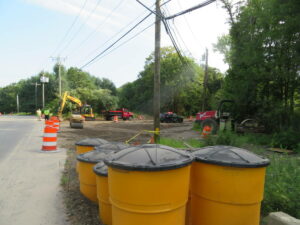 “It’s unfortunate that this project went this way,” Vavala said. “As business owners in Monroe, it reflects badly on us. It’s a lot of outside factors besides us and the town.”
“It’s unfortunate that this project went this way,” Vavala said. “As business owners in Monroe, it reflects badly on us. It’s a lot of outside factors besides us and the town.”
“I’m very upset over the delays this project has had,” First Selectman Ken Kellogg said during an interview in his office at Monroe Town Hall. “Nobody’s happy about the time it’s taken.”
The first selectman said town officials have done everything within the town’s control to facilitate the completion of the project, which is 90-percent funded by the state and federal government.
Because of the project’s funding, everything must be done within the Connecticut Department of Transportation’s oversight. Kellogg said that, unlike other road projects, the town must follow a state-required contract and get certain approvals from the DOT, so it is somewhat limited in directing the work.
But Kellogg said he is encouraged that work is underway on Pepper Street this summer.
“Crews are out there now,” he said Monday. “I’m pleased with the progress that’s been happening the last two, three weeks. The binder course is down and the final course still needs to be done.”
Town Attorney Frank Lieto has also been closely involved with the project.
“While there have been delays, in the grand scheme of things we are pleased the project is showing signs that it’s finally moving towards completion,” he said. “I really commend the efforts of the First Selectman’s Office and the Department of Public Works, with the assistance of BL Companies, in staying on top of monitoring this project to ensure we are doing everything in our power to keep this moving forward.”
The Sun interviewed Kellogg, Lieto, Vavala, Public Works Director Chris Nowacki, DOT spokesman Josh Morgan and Peter Schirmer, principal inspector of BL Companies, for this story.
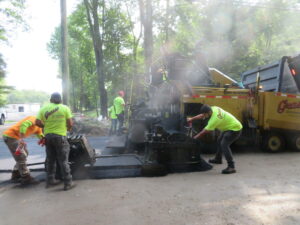 BL Companies is a consultant hired by the town, serving as its eyes and ears at worksites, doing all of the engineering, and ensuring the project is being done according to DOT standards.
BL Companies is a consultant hired by the town, serving as its eyes and ears at worksites, doing all of the engineering, and ensuring the project is being done according to DOT standards.
“A lot of contractors don’t quite understand the DOT procedures,” Schirmer said in a telephone interview Monday. “We have to dot our i’s and cross our t’s. In their defense, it can be convoluted and complicated unless you worked with the procedures before. I’m not knocking the DOT either, because they have guidelines they have to follow.”
Aside from site inspections, BL Companies has helped Grasso Companies understand the intent of the contract documents, according to Schirmer.
Moving utilities
Vavala said the COVID-19 pandemic had a “huge” affect on the project, decreasing the availability and cost of supplies, labor and asphalt, which had a “25-to-30 percent” cost increase.
“To date, Grasso has gone through three years of labor escalation, three years of material escalation and a major fuel escalation in March of 2022,” he said. “These costs are not carried in the original bid proposal provided in 2020. To date the contractor has not been compensated for the escalated costs due to reasons outside of its control.”
“There is an item in the contract for pavement adjustment cost, but at this time, no other reimbursement will be made for any increased price of materials,” Morgan said in an email Friday. “The utility relocation has been the driving factor as to why this project has not yet been completed.”
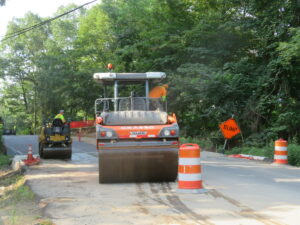 Everyone interviewed agrees the moving of utilities has had the most significant impact on the project’s timeline.
Everyone interviewed agrees the moving of utilities has had the most significant impact on the project’s timeline.
The massive project includes safety and geometric upgrades to improve sight lines — lowering the roadway in some areas, upgrading the traffic signal at the intersection at Main Street, drainage improvements, a complete replacement of the culvert at the Jockey Hollow Road intersection and completion of a section of the multi-use trail.
To do much of the work, an extensive number of overhead and underground utilities had to be relocated. The utility companies are not included in the contract for the project, so their scheduling to move their utilities on Pepper Street is not bound by the project’s timeline, according to Kellogg.
Sometimes a utility must reprioritize its work, according to Schirmer. For example, a bad summer storm or a microburst could make Eversource allocate it resources to restoring power for its customers rather than to a road project, he said.
Nowacki said it is up to Grasso Companies, as the contractor, to coordinate with the utilities when work needs to be done.
“It’s in the contract. It’s the contractor’s responsibility,” Schirmer agreed. “It’s not in our scope of work as the construction manager, but we try to help and give the utilities some perspective and a sense of urgency.”
Kellogg said he has personally called utilities himself to help move things along, recalling a time when he reached out to Eversource Gas on a significant job of replacing an old gas line.
“They had to get it done right,” he said, adding specialized equipment had to be brought in from out-of-state. “This was an instance when I was happy with the response.”
There were also times when utilities were harder to locate.
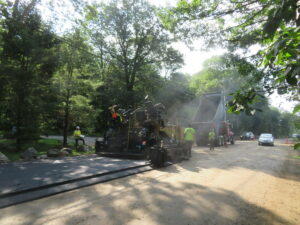 “I heard some underground utilities weren’t where they were supposed to be based on old maps,” Kellogg said of information utility companies provided to BL Companies, which made a set of engineered drawings signed off by the town.
“I heard some underground utilities weren’t where they were supposed to be based on old maps,” Kellogg said of information utility companies provided to BL Companies, which made a set of engineered drawings signed off by the town.
“We are appalled at how long this project has carried on and the inconvenience it has caused,” Vavala said. “Due to the lack of investigation in identifying the conflicts, the relocation of gas, water and telecommunication have taken years to complete. The project schedule only allowed a nominal amount of time for conflict relocation to meet the project completion of 14 months.”
“The pre-investigation of the project was poor,” Vavala continued. “In a perfect world, we would have a clean slate to work. Every time we opened the road there was a problem. We had to go outside the scope of the plan of attack to keep moving.”
“We can’t direct the methods and means of the contractor on how they work,” Nowacki said of Grasso Companies.
Schirmer, who has been in the industry for 25 years, said inaccurate utility maps are not uncommon. However, in defense of the utility companies, he said there was a time when documentation on the placement of utilities was not as accurate as it is today.
Layers of pavement could also accumulate over the years, making it deeper to get to a utility under a road, Schirmer said of another potential factor.
“There’s always going to be change orders,” he said of projects. “It can be very challenging to deal with that in the field. Contractors want to keep moving or they don’t make money.”
Schirmer noted that contracts include clauses for redesign.
“We just try to work through that. You try to find a way to keep it moving,” he said of the contractor’s work. “We can’t prescribe means and methods. We can think of a different way to do it, but we can’t direct them on how to do their work. We can only ensure their work meets the terms of the contract.”
An MOU
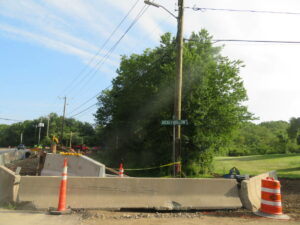 When the project ground to a halt last summer, all sides came to the table in July to agree to a memorandum of understanding (MOU) to settle disputes between the contractor and the town, while avoiding “the unnecessary costs and uncertainty of litigation.”
When the project ground to a halt last summer, all sides came to the table in July to agree to a memorandum of understanding (MOU) to settle disputes between the contractor and the town, while avoiding “the unnecessary costs and uncertainty of litigation.”
The town agreed to immediately release the undisputed contract balance of $298,492.
There is an additional $130,151 disputed contract balance Grasso seeks and the parties reserve their rights and “will endeavor to resolve the Disputed Contract Balance in a timely fashion,” according to the agreement.
Grasso agreed to provide the town with timely updates and projections on the progress of the project, including closures and other important activities as requested by the town.
The town agreed to extend the project completion date to November 15, 2022.
Grasso would remit a $93,441 payment to the town for traffic control services/special duty pay for the Monroe Police Department.
Grasso requested a total of “Reserved Claims” not to exceed $445,078 for unanticipated conditions “attributable to utility conflicts with the design, as well as a corresponding time extension request and request for an equitable adjustment arising from certain delays and impacts beyond Grasso’s contract.”
The breakdown is $232,000 in utility relocation costs, $42,349 in fuel escalation, $11,100 in labor escalation, $48,300 in material escalation, $51,600 in vendor escalation, $38,534 in overhead and $21,194 in profit.
The town agreed to pay 10 percent of these costs so long as the state of Connecticut agrees to the requests. But if the state does not, the town will not be held liable.
“We did this in good faith to set a reasonable timeframe to move forward with the project,” Lieto recalled.
Substantially complete
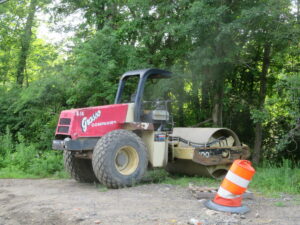 After the agreement, Kellogg said the project should be “substantially complete” by November of 2022, meaning all of the paving would be done and only minor “housekeeping” work would be left. To drivers, everything would seem complete.
After the agreement, Kellogg said the project should be “substantially complete” by November of 2022, meaning all of the paving would be done and only minor “housekeeping” work would be left. To drivers, everything would seem complete.
“At that time, the town of Monroe had indicated that all utility conflicts were resolved,” Vavala said. “That was not the case. Not more than two days after that meeting, we experienced another major conflict with the gas infrastructure. This is the area that is currently dug up and being prepared for paving. This conflict was not resolved until March of 2023.”
On Thursday, Vavala pointed to an area of grass on the side of the road in the 480-block of Pepper Street, which was cut into. A gas line there would have run above the road, so it to be relocated by Eversource Gas, Vavala said of one of the delays.
If not for that, he said the section they were paving last week, up to Commerce Drive, would have been done last year.
At the time, Kellogg said the information he was given was that all of the utility work was complete.
Vavala said he put in a request in September or October to work last winter, and claimed the town denied it, before saying there actually was no denial, rather no response.
 Kellogg said that is not true and Nowacki said the town submitted the request to the DOT through BL Companies, but had a long wait for an answer due to staffing issues at the state agency. By mid-February, he said the DOT allowed it and the town told Grasso it could do the work.
Kellogg said that is not true and Nowacki said the town submitted the request to the DOT through BL Companies, but had a long wait for an answer due to staffing issues at the state agency. By mid-February, he said the DOT allowed it and the town told Grasso it could do the work.
Vavala agreed that the town gave them the go ahead then, but said, “we were too far into the winter,” explaining that his crews and equipment were already allocated to other jobs.
In order for the DOT to deem a project to be “substantially complete”, Kellogg said nothing can be left outstanding. He said the project calls for a new traffic signal installation at the intersection of north Pepper Street and Route 25.
There was a change order by the state for more updated technology and the first selectman said Grasso told the town it was unable to secure a part to do the job.
“The mast arms for the intersection of Route 25 and Pepper Street have been on-site for several weeks, but have not yet been installed,” Morgan said. “The project will not be substantially complete until that is installed. The current project completion date is this October.”
“We have an electrical subcontractor coming in to install span poles for the traffic lights,” Vavala said.
The finish line
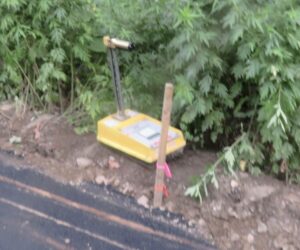
Schirmer said BL Companies recently devoted a junior inspector to the Pepper Street job to free up Chief Inspector St. Clair Rodney to take care of administrative work, so the DOT can secure federal funding for the project.
“We all want the same thing,” Nowacki said. “We want the job done properly and to turn over a safe road to the public.”
On Thursday morning Grasso Companies’ work crew stood around idly while waiting for the next truckload of asphalt to arrive.
“We have to wait for the trucks to come,” Vavala said. “It’s not one after the other, after the other.”
Grasso Companies’ crews are capable of working with 1,200 tons of asphalt per day, but Thursday their maximum was 700 tons, so the job would take the entire day, according to Vavala. This is because of the multiple inspections involved in a DOT project, he said.
“Because this is state funded, there’s so much testing involved,” Vavala said. “At the plant the state tests every load that comes out. Then they test the compaction. Whenever you have a DOT project, you can never just get up and go. There are multiple inspections.”
Vavala said the temperature of the asphalt must meet specifications and when a road is paved, the compaction has to be at 93 percent. If not, it must be torn up and hauled away.
A truck soon arrived with asphalt to lay down for the rollers and the work resumed.
Vavala said the compacting testing is to ensure the binder course, the bottom layer, provides a solid base for the final layer of paving.
“This is the bottom course,” he said. “We still have to come back and do the final lift. All the dirt that is exposed will be covered over today. After this, we will install curbing per DOT specifications. We have to install topsoil, seed, hay, trees and plants.”
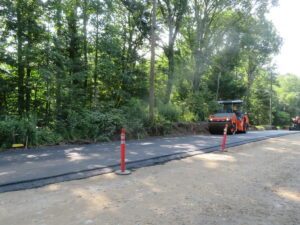 Aside from the paving and the traffic signal, Vavala said a guide rail must be installed, as well as guide rails and wooden fencing by the box culvert and along the walking trail.
Aside from the paving and the traffic signal, Vavala said a guide rail must be installed, as well as guide rails and wooden fencing by the box culvert and along the walking trail.
“We are really happy to wrap it up by this season,” he said.
The DOT’s construction season ends on Dec. 15, but Vavala said the project should be “substantially complete” or 90 percent done minus a punch list of items and final inspections, by September.
“We hope to get the top course in by September, weather permitting,” he said. “You’ll see crews after with housekeeping items, touching up areas without major disruptions to traffic.”
All respectful comments with the commenter’s first and last name are welcome.



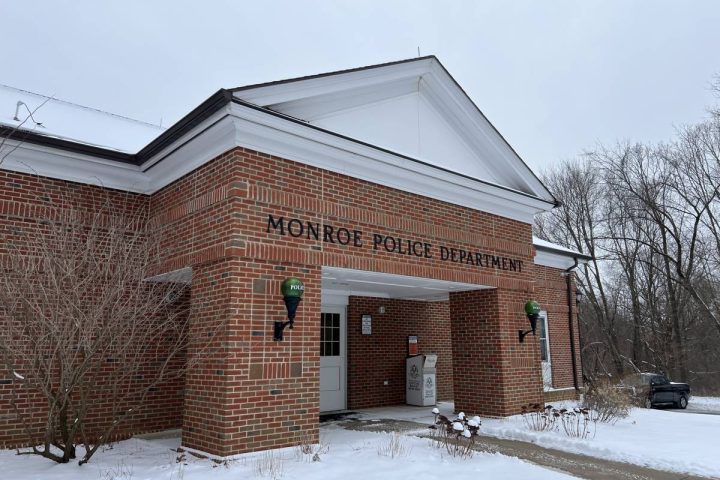
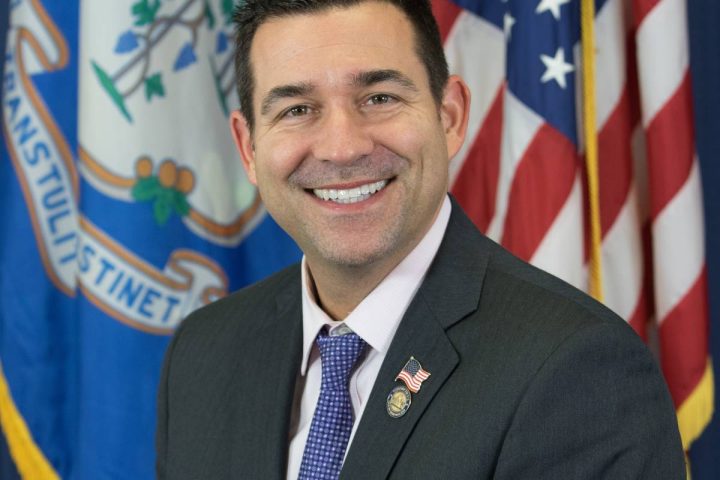


Enough with the excuses! Anyone who drives by this project, or who walks along any part of it on a regular basis knows that the problem is the lack of labor and the lack of consistent work.
For example, the outer parapet walls of the culvert were framed in December 2022 and then covered for the winter. The construction season started in April but Grasso Companies did not pour the concrete until about June 7th. They lost 9 weeks with this inaction.
By June 13th they removed the forms from the outer sections and by June 16th they started framing for the inner parapet walls. They did not complete the framing until Tuesday July 18th, because no work was done during most of that time. They lost about 4 more weeks here.
On Friday July 21st they poured the concrete. Once it hardened two men returned on Friday July 28th to remove the forms. They only removed three of the four forms. Why did they not work a few more hours to complete the job? Or, why did Grasso not provide four men to ensure that the work could be completed in one day?
The two men returned on Monday morning July 31st and removed the final form.
Since then, there has been no work done on the culvert at all. This means another six days (accounting for a no-work rain day) has now been wasted (as of Aug 9th).
So far this year Grasso has lost about fourteen (14) weeks of production on the culvert due simply to not having people working each and every day.
Steve Kirsch
Monroe CT
My thanks to Steve for this factual comment. It confirms what all of us who live, drive, or walk by the embarrassing Pepper Street project have been thinking. There has not been a consistent push to complete this project. It will be great when the project is complete. It just is frustrating that is has taken so long.